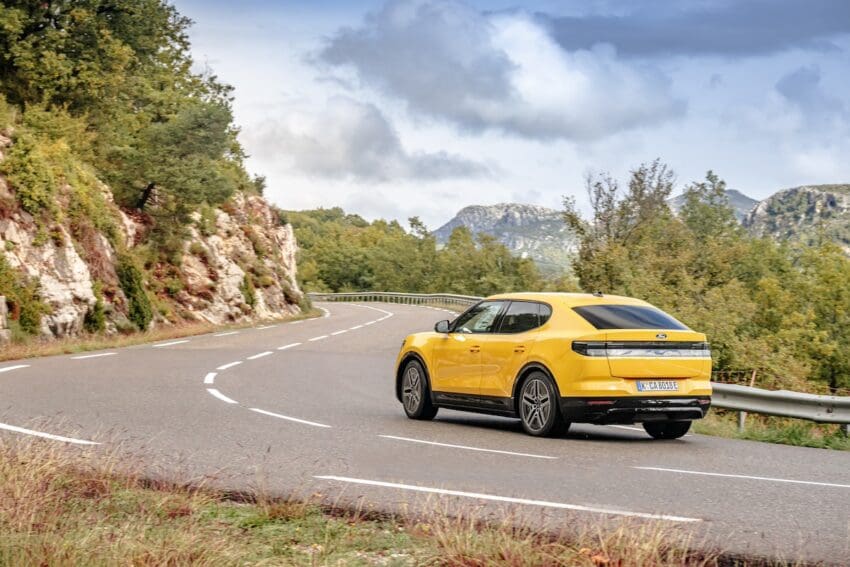
Bends in the road won’t stop electric vehicle success
Daniel Forsberg, marketing manager at charger specialist CTEK, argues that we must look beyond the headlines for the real story of EVs’ evolution
Read the room and you could be forgiven for thinking electric vehicles have shifted into reverse. Car manufacturers are shouting that they can’t meet mandated EV sale shares in time. Some politicians argue that the race to net zero is being run too fast, or even unnecessarily.
Plenty of commentators look at each month’s new vehicle sales data and interpret a slowdown as a terminal decline. Social media is a parked garage of fixed opinion that EVs are too expensive, too untrustworthy, too slow to charge and too short on range that they will never prevail.
The legacy manufacturers surely are feeling a pain of transition from petrol and diesel that the new wave of electric-only vehicle makers can only imagine. The old guard want governments to relax, extend and de-penalise the timeframes and targets amid a perceived consumer rejection of the EV switch.
But is that what is really happening? Are there fewer and fewer consumers left who are willing and able to plug into EVs and who have not already done so? Are the disappearance of subsidies, discounts and other encouragement to choose EV shutting down the electric transport revolution?
Look beyond the hype
Anyone tempted to surf this wave of scepticism should consider a different kind of curve. When new technology is introduced, it often follows Gartner’s ‘Hype Cycle’, a model that describes the maturity process of new tech.
After an initial period of inflated expectations, there is usually a phase of disappointment when the technology doesn’t immediately live up to the hype. This is where EVs are today – transitioning from the cycle’s ‘trough of disillusionment’ to its ‘slope of enlightenment’ which rises toward expectation equalling reality. Despite short-term hurdles, we are entering a period of steady EV growth and maturity.
Part of the international discord over the outlook for EVs is amplified by the different maturity of various major markets. A month with bad news from the US echoes across to the EU. A dip in Swedish sales of new EVs reverberates beyond Sweden.
To see where we are all headed eventually, it can be instructive to look at perhaps the most mature EV nation – Norway. In September BEVs (battery electric vehicles) took more than 96 per cent of new car sales. And it was not a blip. BEVs had 94 per cent of new car sales in August and almost 92 per cent in July. Plug-in hybrids (PHEVs) were at 1.1 per cent in September.
In Sweden, the proportion of newly registered EVs is predicted to exceed 60 per cent by 2025. This growth is driven by technological advancements, political initiatives and an expansion of charging infrastructure that is also accelerating rapidly. The EU plans to have more than one million public charging points by 2025. And in the US, tax credits have contributed $2 billion so far in 2024 to help buyers choose an EV.
Meanwhile in Germany, one month (August 2024) of woeful headlines about plunging EV sales is followed the next month (September) by articles about rising EV sales. The explanation is the ending of a German subsidy which saw a deadline boom in EV sales in August 2023 followed by a post-subsidy slump in September 2023.
Overall, new car sales are down in Germany but it is the EV that gets the headlines, not the melting ICE sales. In September 31,115 purely diesel cars were registered, fewer than the 34,479 BEVs. But one need to look across the whole timeline, not just one month.
In the UK there was a record number of new BEV registrations in September at 56,387, according to the Society of Motor Manufacturers and Traders (SMMT). That was up almost a quarter on the same month in 2023. Add in PHEVs, and the EV market share is more than a third of the total.
Moving in the right direction
A bump in the UK road is revealed by fleet and other business buyers being behind much of those BEV sales. Year to date BEV demand from private buyers is down. In contrast to Norway, PHEVs are proving enduringly popular in the UK. Sales of PHEVs grew faster than any other fuel type.
That popularity is maybe reflected in the new UK government’s decision to allow sales of some new PHEVs until 2035 whilst reinstating to 2030 the previously relaxed ban on new cars running solely on petrol or diesel.
The direction of travel – in the UK, EU, US and elsewhere – is clearly towards EVs. New battery technologies, lower production costs and better and more plentiful charging infrastructure will all impel us along the EV road. Battery prices fell from over US$1,100 per kWh in 2010 to about US$156 per kWh in 2023. And BEV ranges keep increasing; Tesla has just launched a 436-mile long range Model 3.
Any blips in sales and satisfaction we are experiencing are not a sign of failure but rather an indication that the technology is maturing and finding its place.